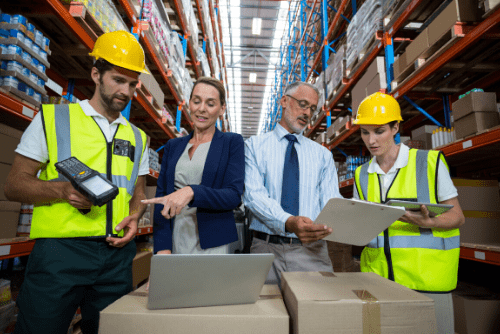Track And Trace Technology In Logistics And Supply Chain
Currently, Organizations all over the world are aiming at working towards improving the efficiency of their system, and to achieve it, latest technology is used extensively. Track and Trace is one such technology. Being in use for more than a century now, the track and trace system has been a witness to a lot of evolution and advancements.
Tracking refers to the information on the exact location of goods which are in transit, while the tracing is extensively used for goods that are stationary. The need of inculcating such a system has aroused due to multiple reasons:
- Inventory Management: information is needed about the volume of inventory in transit in advance for better management of the warehouse space and operations.
- Time-to-market calculation: we need to know the time of arrival of the stock as well as the time of discharge, to run the processes smoothly.
- Product safety: Need to know the real time location of the products to ensure its safety while in transit.
- Risk Management: Companies need to know about the potential risk, to manage the response to those risks.

Track and trace also help in determining the traffic patterns, congestion or bottleneck at any particular point in route by analysing the delay in reach time or any abnormality; which in turn can be used to initiate action or redirect supply. And to achieve it, technologies such as GPS, RFID and Barcode are widely used. These systems can also be integrated with the ERP system of the organization.
- A GPS tracker is a device, which when attached to the product, can detect the exact location of the product and transmit it to the base via the satellite. It can monitor if the vehicle is idle and can also notify the driver as well as the organization, if a wrong or longer route is taken.
- RFID cannot give real time information but can give the last known location. It is a microchip containing data about the product details and is scanned with the help of electromagnetic waves at each checkpoint that the product passes, till reaching the destination.
- Barcodes are coded labels which are tagged on to goods, and are scanned manually with the help of a barcode scanner to extract the information regarding the product. It is a labour-intensive work and consumes a lot of time.

- The logistics companies in India are moving way ahead in the game by implementing more innovative and technology-driven solutions to manage their supply chain by tracking not only the products but vehicles too. Depending on the task, a confluence of these technologies is used to locate anything, or anyone, in real-time.
- Connected IoT devices allow warehouses to track location and even condition of inventory and vehicles through cloud services.
- 5G infrastructure can be used to connect more devices to the mobile internet at the same time and vouch for lower energy consumption and higher transmission speed.
- Blockchain is leveraged by organizations to establish a platform, by providing a ledger of movement, to improve transparency and integrity for tracking and tracing throughout the supply chain.
- Electronic logging devices (ELD) are used to track, manage, and share records of driver duty status in real time. It also helps in dealing with the challenge of false drive-time reporting by drivers and fleet owners. Through this system empty trailers can also be mapped and located.
Some years down the line, track and trace will be integrated in every part of the logistics in India which will help the business to become more sustainable.

